At the NHL level, the effectiveness of a player’s system – his processes based on his habits – can be the difference between good, great, and elite status.
In his fourth season as a full-time member of the Montreal Canadiens, there’s been lots of talk about whether Cole Caufield will light the lamp at the elite rate his skillset suggests he’s capable of and that he has at every other level in his career. As someone who’s only flirted with the 30-goal mark over the past three seasons (he’s scored 23, 26, and 28), in part due to a shoulder injury, his six tallies through seven games this season is a promising start.
But can he continue to pot pucks at a high rate with his system?
While we don’t yet have a large enough sample size to determine how much it’s changed, studying Caufield’s approach last season can provide us with valuable insights into a few key areas bound to impact his goal production longer term.
We’ll break down the 23-year-old’s habits through the lens of three goal-scoring hacks to identify certain shifts that would benefit him and are worth monitoring as the season progresses.
Get to the inside and to the net
If you want to score goals in the NHL, the most obvious place to start is to prioritize taking as many of your shots as you can from the slot. According to Sportlogiq, almost 82 per cent of goals scored by forwards at 5-on-5 over the past three seasons were from this area.
Only 44 per cent of Caufield’s 5-on-5 shots last season came from the slot, which in part explains why he struggled to score consistently. For context, that ranks 157th among 186 forwards who essentially played top-six minutes.
The graph below, courtesy of AWS, shows the league shooting percentage from different portions of the offensive zone over the same period. The dotted black lines indicate the slot and the two green sections basically account for the inner slot, where 53 per cent of goals by forwards were scored.

Unsurprisingly, the closer to the net and middle of the ice the shot, the higher the rate the puck beats the goalie.
When you look at Caufield’s 5-on-5 shot attempt locations from last season and compare his heat map to those of the top seven scorers in the league, his lower concentration of attempts from the middle of the slot is apparent.

In 2022-23, before he was injured and limited to 46 games, Caufield was on pace for 46 goals and his map looked significantly different:
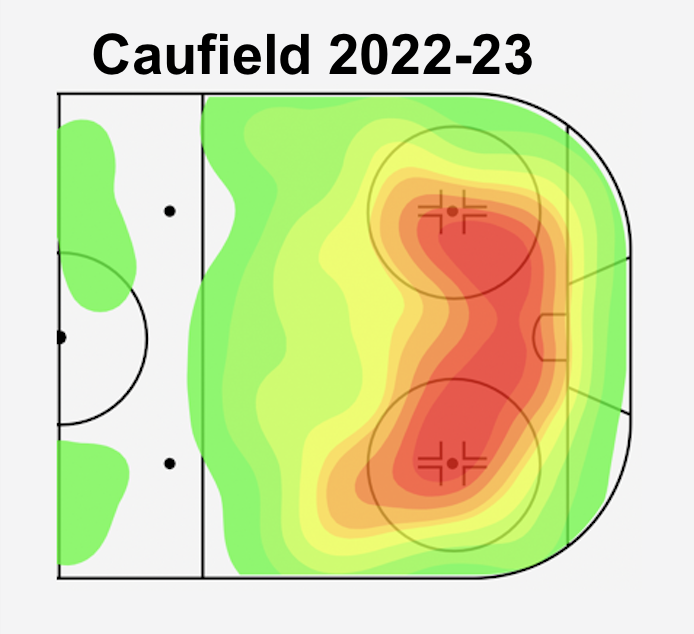
For context, here's what it looks like through seven games this season:

Amid a cold stretch last year, Montreal head coach Martin St. Louis said that Caufield needed to “find ways to get on the inside, with or without the puck.”
Throwing the puck on net from low-percentage areas became more of a habit than a calculated, situation-specific practice for the winger:
Concurrently, his attack mentality waned. He often opted out of challenging defenders 1-on-1 or trying to establish inside position when he had a step, elected to stay to the outside more than cut to the middle, and didn’t take advantage of the space he was afforded on many occasions. The result was shots from further out or on sharper angles, as the following clips highlight.
When he did assume a more aggressive approach, the quality of his chances improved drastically:
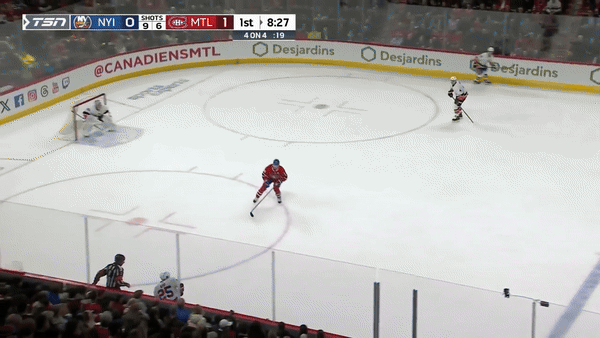
This “shoot first and from wherever” habit also limited Caufield's capacity to leverage one of his greatest strengths: an ability to find soft spots or gaps in coverage and beat defenders to space without the puck.
Since his decisions with the puck regularly killed offensive zone possessions for his team (read: led to turnovers or unwarranted stoppages), he had fewer opportunities to use this skill.
When Caufield makes plays from lower-percentage areas that simply extend sequences for his team in lieu of firing the puck, he gives himself many more chances to use his agility, quickness, and smarts to get it back in higher-percentage areas where his shot is a greater threat.
Here are three examples:
So far this season, it seems like Caufield has been more selective about when he shoots (his shot attempts per game are down by two), which I view as a good sign. On the flip side, he’s already pulled out the protractor to beat goalies from sharp angles a couple times, and I wonder if those instances will reinforce a habit that’s not serving him.
Identify advantages early
If there’s one trait the league’s top players share, it’s elite awareness. Guys who score a lot of goals possess it, too.
They habitually scan to gather information early about not only pressure and support, but a collection of more nuanced variables – like speed, spacing, body cues, configurations – that can help them identify where small edges may exist in a given situation. They know what to look for and are pros at processing their findings to make smart decisions that ultimately drive their production.
While Caufield owns some good scanning habits, there seem to be repeated instances where he lets the opposition off the hook because details that reveal advantages elude him. Here are a few examples from last season:
• Forward defending him opens an opportunity to attack prime ice
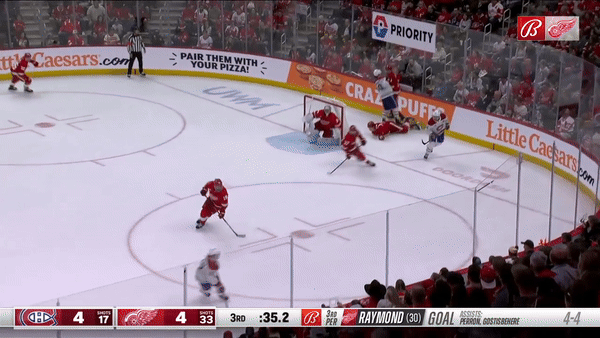
• Forward assuming role of defenceman and forced to skate backwards opens an opportunity to attack on his side immediately

• Both defencemen caught on same side of the zone opens an opportunity to orchestrate offence on the other side and keep them out of play as long as possible
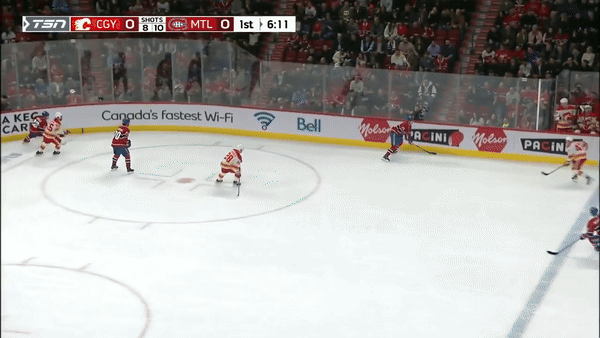
• Defender with feet turned to one side opens an opportunity to beat him by attacking heels

As subtle as they may be, scanning specifically for these kinds of vulnerabilities in the opposition can spell the difference between Caufield scoring 30 goals and reaching 40-50.
Recognizing numerical advantages is another important piece. Small-area 2-on-1s naturally materialize constantly and if No. 13 can start using them more consistently to isolate defenders or manipulate their positioning, he’ll end up with better looks.
Here’s a great example from David Pastrnak (and a not-so-great example of team defence from the Hurricanes), who uses the threat of a pass to two teammates to walk out of the corner and right into the inner slot for a goal:
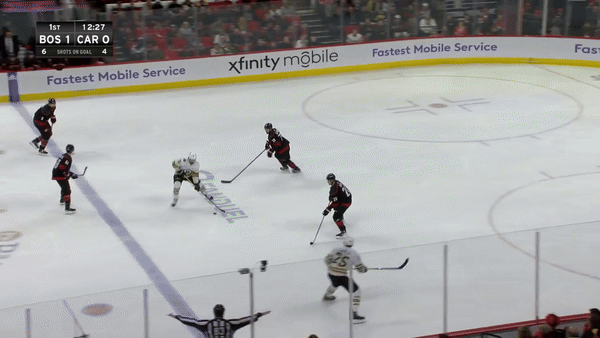
Make the goalie’s life difficult
Goalies are adept at reading subtle cues from shooters, so there are many ways to throw them off the scent or simply make it very challenging for them to stop the puck, including:
• Using a defender as a screen
• Shooting in stride
• Disguising your shot inside a stickhandle
• Disguising your intention to shoot inside a passing option
• Playing with the timing of your release
• Aiming for a particular spot based on your route or his route
• Shooting without prepping the puck
• Pulling the puck laterally right before releasing it to change the angle
While Caufield has found success with all these tactics at one point or another, the latter two stand out as areas of opportunity for him to create better shooting conditions for himself.
By routinely giving the puck an extra handle before shooting, he affords goalies enough time to set their feet and assume their stance, decreasing his chances of scoring.
Below is an interesting comparison of two identical plays – one from last season versus Columbus and the other from this season versus Ottawa – where Caufield shoots the puck from the bottom of the left circle after receiving a pass from the point. You can’t boil a goal down to one factor, but it’s worth noting that he stick-handles the puck once (forehand to backhand to shot) on the play where he doesn’t score and refrains from doing so (forehand to shot) on the goal.

Moving on to the second tactic, pulling the puck laterally before shooting is something Caufield and Adam Nicholas, the Canadiens’ director of hockey development, have discussed. It’s a couple years old, but this conversation between the two of them about where to hold the puck pre-shot is fascinating:
Holding it in front of his body and then quickly pulling it to one side to shoot, as Nicholas suggests, changes the angle on the netminder and creates openings.
You can see this principle in action on a goal Caufield scored six months after that interaction:
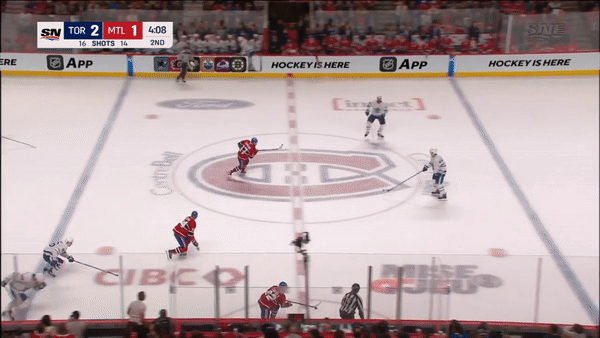
Here’s Nicholas’ commentary on the goal, courtesy of a podcast appearance:
“You can see his pattern and how, I believe Samsonov was in net, and he couldn’t get square to Cole and that’s why Cole was able to rip it short side high and in. That’s all because of his pattern of attack – his hand placement of him threatening to the back side and then able to come back to the right side and rip it short side. And Samsonov couldn’t keep up.”
As the clips below illustrate (first two from this season and other three from last), Caufield seems to have strayed from this pattern, falling into the habit of either reducing the lateral distance of his pull or forgoing it altogether.
The puck just isn’t moving enough to see more of the net and as Rob Gherson, a former AHL netminder and current junior hockey goalie coach, explained in an Instagram Live session a few months back, that’s the key.
“A lot of goalies will plant their feet before you shoot, so if you change the angle, you can almost shoot past the goalie the way you would on a 1-on-1 past the defenceman.”
Gherson referenced how this tactic is a staple of Nathan MacKinnon’s game and, yeah, he’s an appropriate poster child.
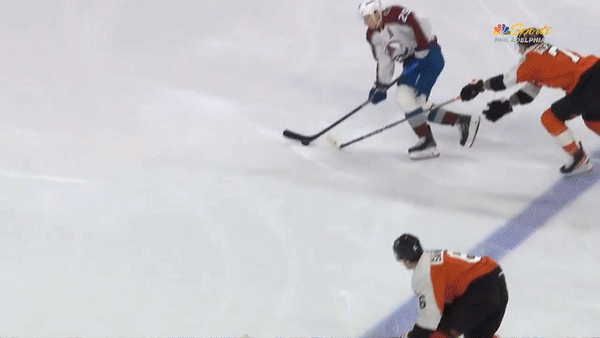
Final thought
With Caufield’s skill and drive to improve, the potential for him to become a top scorer in the NHL is there. Doing so, however, will likely require him to intentionally shift his approach and develop some new habits that make it easier to put the puck in the net on a consistent basis.
In the words of James Clear in his book Atomic Habits, “Goals are the results you want to achieve. Systems are about the processes that lead to those results. You do not rise to the level of your goals. You fall to the level of your systems.”
We’ll see where Caufield’s system stands this season.
Vanessa Kezwer worked as a scout for the USHL’s Chicago Steel for three seasons and was a video analyst for TMU’s women’s hockey team.



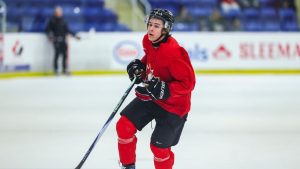

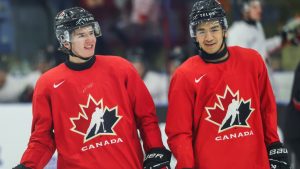
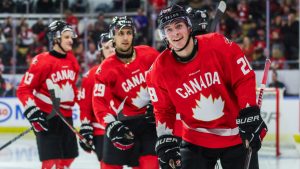 1:55
1:55